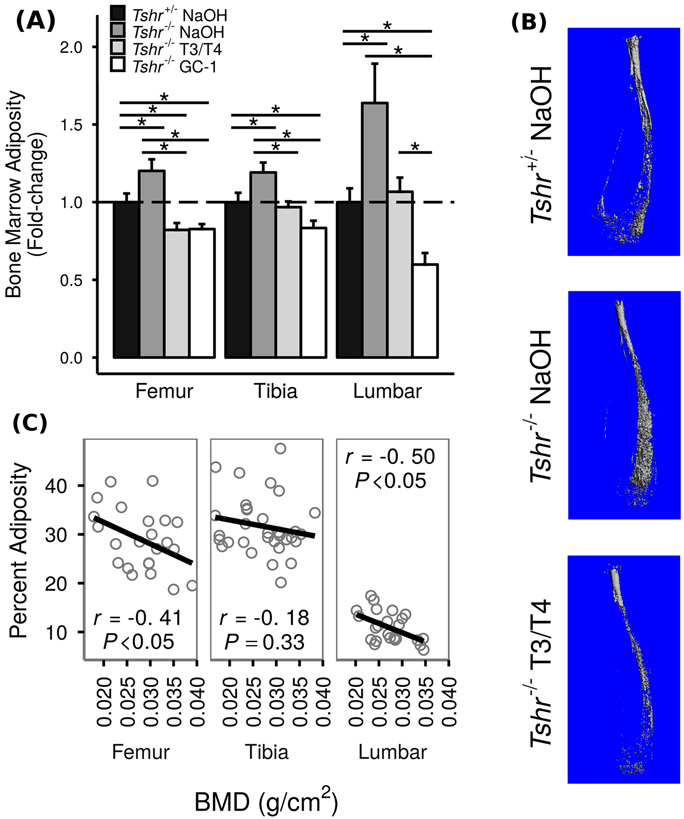Fig. 2.
TH reduces bone marrow adiposity. TH-deficient Tshr−/− mice were injected with T3/T4, TR β-specific agonist GC-1, or vehicle control (5 mM NaOH) on postnatal days 5–14 and compared to euthyroid controls (Tshr+/− littermates) injected with NaOH. At postnatal day 21, bone marrow adiposity and BMD were measured using DXA and μCT. a Bone marrow adiposity, presented as mean fold-change vs. euthyroid controls ± SEM (n = 5–14). TH-deficient Tshr−/− mice have 20, 19, and 60% greater bone marrow adiposity than euthyroid controls at the tibiae, femurs, and vertebrae, respectively. Injection of T3/T4 or GC-1 on postnatal days 5–14 brought bone marrow adiposity down to or below the levels seen in euthyroid controls. Fold-change is vs. euthyroid controls (Tshr+/− NaOH). * = P < 0.05. b Osmium-μCT images showing greater bone marrow adiposity in Tshr−/− mice which is rescued by T3/T4 treatment. c Correlation analysis of bone marrow adiposity and BMD for all genotypes and treatments shows a significant negative correlation at the femurs and lumbar vertebrae

